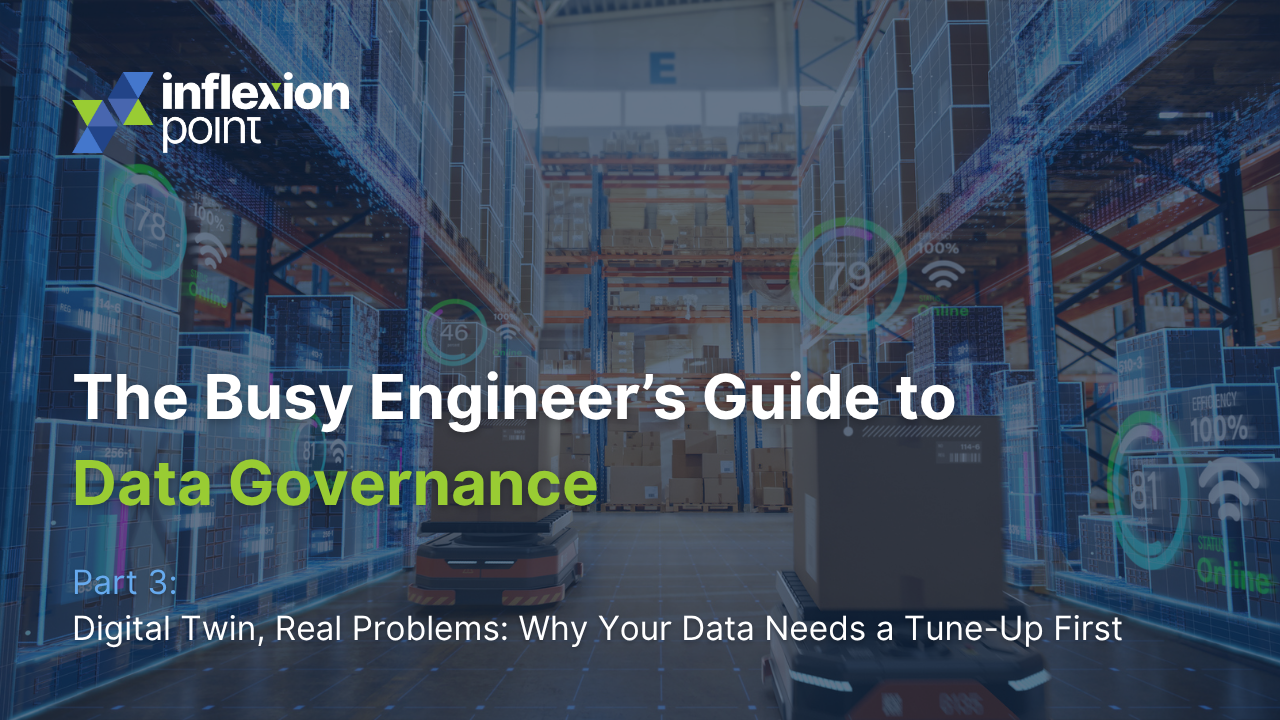Part 3 of the Busy Engineer’s Guide to Data Governance
Everyone wants the shiny stuff—digital twins, predictive analytics, AI. But here’s the truth: None of it works without clean, structured data.
Digital transformation doesn’t start with tools. It starts with trustworthy data, and in brownfield environments, that means governance comes first.
Why Digital Twins Break Without Governance
Digital twins are virtual models of your assets, systems, or processes. They rely on real-time and historical data to simulate performance, predict failures, or test changes.
If the data feeding them is messy, inconsistent, or siloed, here’s what happens:
- Your models show the wrong thing or emphasis unrealistic or unimportant outcomes.
- Process and product anomaly and/or condition based maintenance alerts become false alarms
- Operators stop trusting the insights altogether
And just like that, your “smart” initiative loses credibility.
What a Digital Twin Actually Needs
To work, your digital twin needs:
- Standardized asset hierarchies (think: ISO 81346)
- Consistent naming and metadata
- System interoperability (via OPC UA, MQTT, etc.)
- Aligned semantics across systems
- Defined ownership and version control
In short: governed data.
Real-World Tip: Start With What You Already Have
You don’t need to start with a full-facility twin. Start small:
- One production line
- One asset class
- One use case (e.g., pump failures, batch quality tracking)
Use that pilot to get your data model right. Learn what’s missing. Then establish the rules for data governance and expand.
Governance Unlocks the Real Value
When governance comes first, you get:
- More accurate simulations and predictions
- Smoother rollouts of analytics tools
- Better decisions from both people and machines
- Long-term scalability (without constant rework)
- Confidence from the system end-users
Digital twins aren’t magic—they’re data-driven. And better data starts with better governance.
Wrapping Up the Series
If you’ve made it through all three parts, here’s what you’ve learned:
- Governance is the gateway to modernization—not a blocker
- You can start small and grow your efforts over time
- Standards exist to help you, not slow you down
- Digital transformation only works when the data works too
Modern data governance transforms data from a liability into a strategic asset. Data governance reduces risk, increases agility, and unlocks innovation by enabling trusted, interoperable, and actionable data across the full lifecycle.
- Accelerating discovery and development from laboratory to production scale.
- Enabling smart and compliant manufacturing operations
- Increasing resilience and transparency of the Supply Chain.
- Cross-Cutting capabilities to leverage data for impactful digital transformation
- Accuracy of Validation, Risk Assessments, Regulatory Submissions, etc.
Next week: The Busy Engineer’s Checklist—practical first steps to make your data work smarter, not harder.



